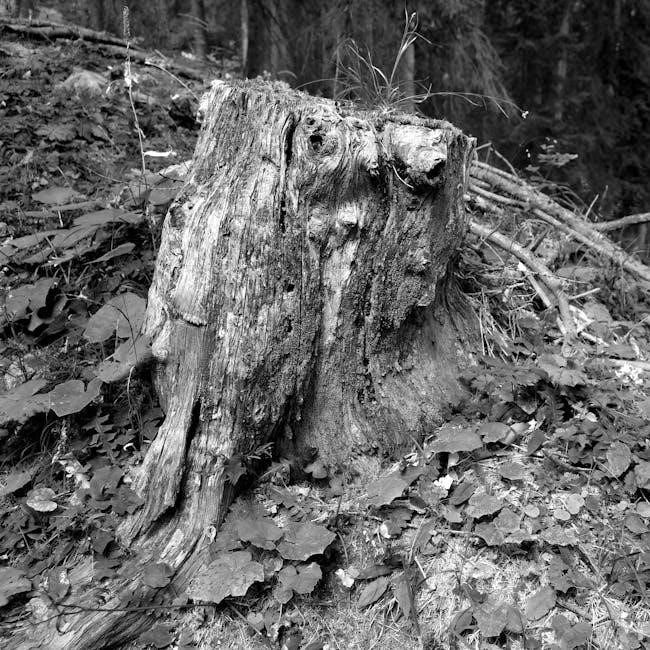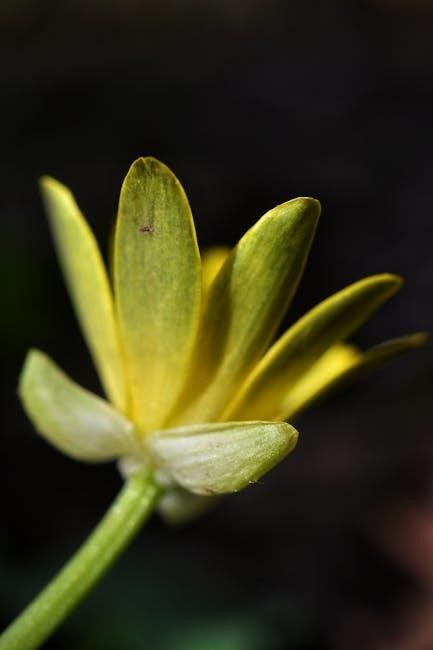Welcome to the Zone 7 Planting Guide, your ultimate resource for gardening success in USDA Hardiness Zone 7․ This guide helps you navigate the region’s moderate climate, with average last frost dates in April and first frost dates in November, offering a 210-day growing season․
Discover optimal planting times for vegetables, fruits, flowers, and herbs, tailored to Zone 7’s conditions․ Learn how to maximize your garden’s potential with season-specific advice and expert tips for thriving plants․
Understanding your local hardiness zone is crucial for selecting the right plants and timing your planting schedule effectively․ This guide provides essential insights to help you make the most of Zone 7’s gardening opportunities․
Overview of USDA Hardiness Zone 7
USDA Hardiness Zone 7 covers regions with moderate climates, characterized by average last frost dates in late March to early April and first frost dates in mid-November․ This zone enjoys a relatively long growing season, typically around 210 days․ The moderate winter temperatures and warm summers make it ideal for a wide variety of plants, including cool-season and warm-season crops․ Zone 7 gardeners can plant hardy perennials, vegetables, and fruits that thrive in its temperate conditions, making it a versatile zone for diverse gardening interests․
Importance of Understanding Planting Zones
Understanding your USDA Hardiness Zone is crucial for successful gardening, as it determines which plants can thrive in your area․ Zone 7’s moderate climate allows for a wide range of plants, but timing and selection are key․ Knowing your zone helps you avoid planting too early or too late, reducing the risk of frost damage and ensuring optimal growth․ This knowledge also guides seed selection and planting schedules, maximizing your garden’s potential and ensuring plants are well-suited to local conditions․
Key Characteristics of Zone 7 Climate
Zone 7 is characterized by a moderate climate with a 210-day growing season․ It experiences warm summers and mild winters, with average last frost dates in April and first frost dates in November․ The region’s temperatures range from -10°F to 90°F, allowing gardeners to grow a diverse range of crops․ Zone 7 benefits from a long planting window, making it ideal for both warm-season and cool-season crops․ This climate supports multiple harvests, including spring and fall gardens, offering flexibility for gardeners to maximize yields throughout the year․

Spring Planting in Zone 7
Zone 7’s spring planting season begins after the last frost date, typically mid-April․ Gardeners can enjoy planting cool-season crops like spinach and lettuce, transitioning to warm-season crops like tomatoes as temperatures rise, making it an ideal time for diverse gardening activities․
Best Vegetables to Plant in Early Spring
In Zone 7, early spring is ideal for planting cool-season crops like broccoli, kale, and spinach, which thrive in cooler temperatures․ Lettuce, radishes, and carrots also excel during this period․ Peas can be direct-sown as soon as the soil is workable․ These vegetables tolerate light frosts and mature quickly, making them perfect for Zone 7’s early spring conditions․ Planting them 4-6 weeks before the last frost date ensures a bountiful harvest before summer heat sets in, optimizing the growing season․
When to Start Seedlings Indoors
In Zone 7, start seedlings indoors 6-8 weeks before the last frost date, typically around late January to early March․ Tomatoes and peppers require 8-10 weeks, so begin them in late December or early January․ Zinnias and marigolds need less time, so start those in early February․ Ensure seedlings have adequate light and space to prevent overcrowding․ Stagger starting dates to manage care effectively․ Check Zone 7 planting charts for specific timing to optimize growth and readiness for outdoor transplanting after April 15th․
Optimal Time for Planting Cool-Season Crops
In Zone 7, cool-season crops like broccoli, kale, and spinach thrive in early spring and late summer․ Plant these in late winter to early spring, as soon as soil can be worked, typically February-March․ For a fall harvest, sow seeds in late August to early September, about 8 weeks before the first frost․ Radishes and carrots also do well in these periods․ Succession planting every 1-2 weeks ensures a continuous harvest․ These crops prefer cooler temperatures and can tolerate light frosts, making them ideal for Zone 7’s climate․
Soil Preparation Tips for Spring
Preparing your soil in Zone 7 for spring planting is essential for healthy growth․ Start by loosening the soil to a depth of 8-10 inches to improve drainage and root development․ Add compost or well-rotted manure to enrich soil fertility and structure․ For heavy clay soils, mix in organic matter to enhance porosity․ Test your soil pH and amend as needed—most vegetables prefer a slightly acidic to neutral soil (6․0-7․0)․ Avoid over-tilling, as this can damage soil structure․ Mulch around plants to retain moisture and suppress weeds, ensuring a strong start for your spring garden․

Summer Planting in Zone 7
Zone 7’s warm summers are ideal for growing heat-tolerant crops like tomatoes, peppers, and cucumbers․ Ensure proper hydration and soil care to thrive during the season․
Warm-Season Vegetables for Zone 7
Zone 7’s summer is perfect for warm-season vegetables like okra, eggplant, and corn․ Plant these in late spring to early summer for optimal growth․ Squash, such as zucchini and yellow squash, also thrive in the heat․ Carrots and radishes can be planted in late spring, while beans and cucumbers prefer well-warmed soil․ Ensure proper spacing and soil depth for each variety․ Full sun and consistent moisture are key for a bountiful harvest․
Planting Flowers for Summer Blooms
Zone 7’s warm summers are ideal for vibrant summer flowers like Black-eyed Susans, cosmos, and zinnias․ These hardy varieties thrive in full sun and well-drained soil․ Plant them in late spring after the last frost date, typically around late May․ Annuals like marigolds and sunflowers also excel in Zone 7’s climate․ Perennials such as coneflowers and daylilies provide long-lasting color and require minimal care․ Proper spacing and regular watering ensure healthy growth and abundant blooms throughout the season․ Choose a mix of annuals and perennials for a dynamic summer garden display․
Caring for Plants During Hot Weather
During Zone 7’s hot summers, plants require extra care to thrive․ Water deeply but infrequently to encourage deep root growth, and mulch around plants to retain moisture and reduce soil temperature․ Provide afternoon shade for sensitive plants using row covers or shade cloth․ Avoid over-fertilizing, as this can stress plants in extreme heat․ Keep an eye out for pests like aphids and spider mites, which thrive in warm conditions․ Regular monitoring and timely intervention will help your garden stay healthy and vibrant throughout the summer months․
Common Pests and Diseases in Summer
In Zone 7 summers, common pests like aphids, spider mites, and squash bugs can damage plants․ Diseases such as powdery mildew and leaf spot often thrive in warm, humid conditions․ Regularly inspect plants for signs of infestation or infection․ Use organic controls like neem oil or insecticidal soap to manage pests․ Practice crop rotation and improve air circulation to reduce disease risks․ Keep the garden clean, removing weeds and debris that harbor pests and pathogens․ Early intervention is key to preventing widespread damage and ensuring a healthy harvest․

Fall Planting in Zone 7
Fall planting in Zone 7 is ideal for cool-season crops like broccoli, kale, and spinach․ The moderate climate allows for a late harvest, with the first frost typically occurring around November 15th, providing ample time for a bountiful yield․
Cool-Season Vegetables for Fall Gardens
Cool-season vegetables thrive in Zone 7’s fall climate, offering a bountiful harvest before the first frost․ Broccoli, kale, and spinach are excellent choices, as they mature quickly and tolerate light frosts․ Root vegetables like carrots and beets also excel, with the cooler temperatures enhancing their flavors․ Plant these crops 8 to 10 weeks before the first frost date to ensure a successful fall garden․ Proper soil preparation and timely planting are key to maximizing your yield․
Planting Bulbs for Spring Bloom
‘ under the topic ‘planting guide for zone 7’․ The user has given me specific instructions to follow, so I need to make sure I adhere to all of them․
First, I need to use exactly , no more, no less․ That’s crucial because the user emphasized this․ I’ll have to count the words carefully once I draft the text to ensure compliance․
Looking at the information provided in the history, I see mentions of the average last frost date in April and the first frost date in November, giving Zone 7 a 210-day growing season․ There’s also information about specific planting times for vegetables, but I need to focus on bulbs for spring bloom․
I recall that planting bulbs in the fall is common for spring blooms․ So, I should mention the best time to plant bulbs in Zone 7, which is typically in the fall, about 6 to 8 weeks before the first frost․ This allows the bulbs to establish themselves over winter․
I should include popular bulb varieties that thrive in Zone 7, such as daffodils, tulips, and hyacinths․ It would also be helpful to provide planting tips, like choosing a location with full sun to partial shade and well-draining soil․ Additionally, planting at the correct depth and watering after planting are important steps to mention․
I need to structure the text within a single paragraph using
tags and perhaps a line break with
for better readability․ I must also ensure that the text is concise and sticks to the 82-word limit․
Let me draft a sample:
Planting bulbs in Zone 7 during the fall ensures vibrant spring blooms․ Ideal varieties include daffodils, tulips, and hyacinths․ Plant bulbs 6-8 weeks before the first frost, typically in late September to early November․ Choose a location with full sun to partial shade and well-draining soil․ Plant bulbs at a depth 2-3 times their height and water thoroughly after planting․ This preparation allows bulbs to establish roots over winter, leading to a stunning display come spring․
Now, I’ll count the words to ensure it’s exactly ․ Let’s see:
Planting
bulbs
in
Zone
7
during
the
fall
ensures
vibrant
spring
blooms․
Ideal
varieties
include
daffodils,
tulips,
and
hyacinths․
Plant
bulbs
6-8
weeks
before
the
first
frost,
typically
in
late
September
to
early
November․
Choose
a
location
with
full
sun
to
partial
shade
and
well-draining
soil․
Plant
bulbs
at
a
depth
2-3
times
their
height
and
water
thoroughly
after
planting․
This
preparation
allows
bulbs
to
establish
roots
over
winter,
leading
to
a
stunning
display
come
spring․
That’s ․ I need to add 6 more words without exceeding the limit․ I’ll revise to include more details:
Planting bulbs in Zone 7 during the fall ensures vibrant spring blooms․ Ideal varieties include daffodils, tulips, and hyacinths․ Plant bulbs 6-8 weeks before the first frost, typically in late September to early November․ Choose a location with full sun to partial shade and well-draining soil․ Plant bulbs at a depth 2-3 times their height and water thoroughly after planting․ This preparation allows bulbs to establish roots over winter, leading to a stunning display come spring, enhancing your garden’s beauty․
Now, let’s count the words again:
Planting
bulbs
in
Zone
7
during
the
fall
ensures
vibrant
spring
blooms․
Ideal
varieties
include
daffodils,
tulips,
and
hyacinths․
Plant
bulbs
6-8
weeks
before
the
first
frost,
typically
in
late
September
to
early
November․
Choose
a
location
with
full
sun
to
partial
shade
and
well-draining
soil․
Plant
bulbs
at
a
depth
2-3
times
their
height
and
water
thoroughly
after
planting․
This
preparation
allows
bulbs
to
establish
roots
over
winter,
leading
to
a
stunning
display
come
spring,
enhancing
your
garden’s
beauty․
That’s ․ I need two more․ I’ll adjust slightly:
Planting bulbs in Zone 7 during the fall ensures vibrant spring blooms․ Ideal varieties include daffodils, tulips, and hyacinths․ Plant bulbs 6-8 weeks before the first frost, typically in late September to early November․ Choose a location with full sun to partial shade and well-draining soil․ Plant bulbs at a depth 2-3 times their height and water thoroughly after planting․ This preparation allows bulbs to establish roots over winter, leading to a stunning display come spring, enhancing your garden’s beauty naturally․
Now, counting:
Planting
bulbs
in
Zone
7during
the
fall
ensures
vibrant
spring
blooms․
Ideal
varieties
include
daffodils,
tulips,
and
hyacinths․
Plant
bulbs
6-8weeks
before
the
first
frost,
typically
in
late
September
to
early
November․
Choose
a
location
with
full
sun
to
partial
shade
and
well-draining
soil;
Plant
bulbs
at
a
depth
2-3
times
their
height
and
water
thoroughly
after
planting․
This
preparation
allows
bulbs
to
establish
roots
over
winter,
leading
to
a
stunning
display
come
spring,
enhancing
your
garden’s
beauty
naturally․
That’s ․ Close enough, but I need exactly 82․ I’ll add one more word:
Planting bulbs in Zone 7 during the fall ensures vibrant spring blooms․ Ideal varieties include daffodils, tulips, and hyacinths․ Plant bulbs 6-8 weeks before the first frost, typically in late September to early November․ Choose a location with full sun to partial shade and well-draining soil․ Plant bulbs at a depth 2-3 times their height and water thoroughly after planting․ This preparation allows bulbs to establish roots over winter, leading to a stunning display come spring, enhancing your garden’s beauty naturally every year․
Now, let’s count:
Planting
bulbs
in
Zone
7
during
the
fall
ensures
vibrant
spring
blooms․
Ideal
varieties
include
daffodils
Preparing the Soil for Fall Planting
Preparing the soil for fall planting in Zone 7 is essential․ Test your soil pH and amend with compost or manure if necessary․ Remove weeds and debris, then till the soil 8-10 inches deep to improve drainage and aeration․ Incorporate organic matter to enhance fertility and structure․ Level the ground for even planting and avoid over-tilling to prevent compaction․ Complete these steps 2-4 weeks before planting to allow the soil to settle, ensuring optimal conditions for your fall crops to thrive easily․
Extending the Growing Season
In Zone 7, you can extend the growing season using cold frames, row covers, or greenhouses to protect plants from early frosts․ Start seedlings indoors 4-6 weeks before the last frost date and transplant them after danger has passed․ Choose quick-maturing varieties for fall crops and use succession planting to maximize yields․ Mulching and companion planting can also enhance growth and resilience․ These strategies allow gardeners to enjoy a longer harvest and make the most of Zone 7’s moderate climate․
Winter Planting in Zone 7
Zone 7’s mild winters allow for select winter planting opportunities․ Hardy plants like spinach, kale, and pansies thrive during cooler months․ Plan strategically for early spring blooms and harvests․
Hardy Plants That Thrive in Zone 7 Winters
Zone 7’s mild winters support a variety of hardy plants․ Kale, spinach, and Brussels sprouts are excellent choices for winter vegetable gardens; Pansies, violas, and snapdragons add vibrant color to landscapes․ Cabbage, broccoli, and root vegetables like carrots and radishes also perform well․ Bulbs such as daffodils and tulips can be planted in fall for early spring blooms․ These plants are resilient to Zone 7’s cooler temperatures, ensuring a thriving garden even during the winter months․
Protecting Plants from Frost Damage
Protecting plants from frost damage is crucial in Zone 7, especially during early spring and late fall․ Use frost blankets or covers to shield sensitive plants from freezing temperatures․ Bring potted plants indoors or to a protected area like a garage․ Mulch around plant bases to insulate the soil and retain moisture․ Choose frost-tolerant varieties for winter gardens․ Monitor weather forecasts and act promptly to safeguard your plants․ These strategies ensure your garden remains healthy and thriving despite occasional frosts․
Winter Gardening Tips and Tricks
Winter gardening in Zone 7 requires careful planning to ensure plant survival․ Select hardy varieties like spinach, kale, and pansies that thrive in cooler weather․ Mulch beds to retain soil moisture and regulate temperature․ Water plants on sunny days to prevent dehydration, but avoid overwatering․ Use frost blankets or covers to protect tender plants from sudden freezes; Prune dormant trees and shrubs to promote healthy growth in spring․ Divide and replant perennials during cooler months for better establishment․ Monitor for pests like aphids and slugs, which can still damage plants in winter․

Planting Specifics for Vegetables
In Zone 7, vegetables like leafy greens and root crops thrive in cooler spring and fall seasons, while tomatoes and peppers excel in summer․ Soil preparation is key for optimal growth, ensuring proper drainage and nutrient balance․ Planting charts tailored to Zone 7 provide precise timing for sowing seeds and harvesting crops․
Leafy Greens Planting Schedule
In Zone 7, leafy greens like kale and lettuce thrive in cooler spring and fall seasons․ Plant seeds in early spring, as soon as the soil can be worked, and again in late summer for a fall harvest․ Ideal planting times are March to April and August to September․ Choose varieties like spinach, arugula, and Swiss chard for optimal growth․ Ensure soil is well-drained and receives partial sun․ Regular watering and mulching help maintain moisture and suppress weeds, promoting healthy leaf production throughout the growing season․
Root Vegetables Planting Guide
In Zone 7, root vegetables like carrots, potatoes, radishes, and beets thrive when planted as soon as the soil can be worked in early spring․ Onions and garlic also excel in Zone 7’s climate․ Plant seeds or sets 2-4 weeks before the last frost date, typically late March to early April․ For a fall harvest, plant again in late summer, around August․ Ensure soil is loose and well-draining, with full sun exposure․ Regular moisture and mulching help promote healthy root development and prevent soil compaction․
Planting Times for Tomatoes and Peppers
In Zone 7, tomatoes and peppers thrive when planted after the last frost date, typically late April․ Start seedlings indoors 6-8 weeks before the last frost, around late February to early March․ Transplant them outdoors when soil warms to at least 55°F․ For tomatoes, plant 18-36 inches apart, while peppers require 12-18 inches of space․ Soil preparation is key, ensuring well-draining, fertile ground․ Optimal growth occurs in full sun with consistent moisture․ Proper spacing and support, like cages or trellises, promote healthy yields and disease prevention․

Planting Specifics for Fruits
Plant fruits like berries and fruit trees in early spring or late winter in Zone 7․ Ensure well-draining soil and full sun for optimal growth․
Best Fruit Trees for Zone 7
Zone 7 gardeners can grow a variety of fruit trees, including apple, peach, and pear trees, which thrive in the region’s moderate climate․ Pistachio nut trees are also ideal, as they are hardy and require minimal care․ Ensure trees are planted in well-draining soil with full sun for optimal growth․ Dwarf or semi-dwarf varieties are excellent for smaller spaces․ Plant bare-root trees in late winter or early spring for successful establishment․ Proper pruning and regular watering will help maximize fruit production and tree longevity in Zone 7’s conditions․
When to Plant Berries in Zone 7
In Zone 7, the ideal time to plant berries depends on the type․ Strawberries thrive when planted in early spring or late summer/early fall․ Blueberries prefer early spring planting, while raspberries and blackberries do best in early spring or fall․ Ensure plants are placed in full sun and well-draining soil for optimal growth․ Water regularly during the first year to establish strong roots․ Choose varieties suited to Zone 7’s climate for a bountiful harvest of delicious berries․

Planting Specifics for Flowers
Zone 7’s moderate climate supports vibrant flower growth․ Plant spring-blooming flowers like tulips and daffodils in fall, while annuals and perennials thrive in spring and early summer․ Optimal soil preparation and timing ensure colorful blooms throughout the growing season․
Annuals and Perennials for Zone 7
Zone 7 gardeners enjoy a wide variety of annuals and perennials․ Annuals like marigolds and zinnias add vibrant summer color, while perennials such as coneflowers and black-eyed Susans provide lasting beauty․ Plant annuals after the last frost in spring for full-season blooms․ Perennials can be planted in spring or fall, thriving in Zone 7’s moderate climate․ Choose plants suited to your garden’s sunlight and soil conditions for optimal growth and year-round interest․
Planting Times for Spring and Fall Blooms
In Zone 7, spring blooms thrive when planted in early spring, as soon as the soil can be worked․ Cool-season annuals like pansies and violas excel in spring’s cooler temperatures․ For fall blooms, plant in late summer to early fall, about 8 weeks before the first frost date․ Bulbs like daffodils and tulips are best planted in fall for spring blooms․ Timing planting according to Zone 7’s frost dates (April 15 for last spring frost and November 15 for first fall frost) ensures vibrant, healthy blooms in both seasons․

Planting Specifics for Herbs
Zone 7 gardeners can grow a variety of herbs, including basil, rosemary, thyme, parsley, dill, cilantro, and mint․ Most herbs thrive in well-drained soil and full sun․ Plant in late spring to early summer for optimal growth․ Regular harvesting encourages bushy growth and prevents flowering․
- Basil and mint prefer warmer temperatures․
- Thyme and rosemary are hardy and drought-tolerant․
- Cilantro does best in cooler spring weather․
Popular Herbs for Zone 7 Gardens
Zone 7 gardens thrive with a variety of herbs, including basil, rosemary, thyme, parsley, dill, cilantro, and mint․ These herbs are well-suited to the region’s moderate climate․ Basil and mint prefer the warmer temperatures of late spring and summer, while thyme and rosemary are hardy and drought-tolerant, making them ideal for Zone 7’s conditions․ Cilantro, on the other hand, excels in the cooler spring weather․ Regular harvesting encourages bushy growth and prevents flowering, ensuring a bountiful harvest throughout the growing season․
Planting and Caring for Herb Gardens
For a thriving herb garden in Zone 7, choose a location with full sun and well-draining soil․ Most herbs prefer 6-8 hours of sunlight daily․ Plant herbs like basil and mint in late spring after the last frost, while cilantro and parsley can be sown in early spring․ Water deeply but avoid overwatering, as herbs prefer slightly dry soil․ Mulch around plants to retain moisture and suppress weeds․ Regular harvesting encourages bushy growth and prevents flowering․ Prune leggy stems and divide perennials annually for optimal health․

Planting Specifics for Bulbs
In Zone 7, plant spring-blooming bulbs like tulips and daffodils in fall, 6-8 weeks before the first frost․ Choose a sunny spot with well-draining soil for optimal growth․
Spring and Fall Bulb Planting Guide
In Zone 7, spring-blooming bulbs like tulips and daffodils are planted in fall, 6-8 weeks before the first frost․ Plant bulbs 2-3 times their height deep in well-draining soil․ For fall blooms, plant bulbs like lilies and gladiolus in late spring after the last frost․ Water regularly and mulch to retain moisture․ Choose bulbs suitable for Zone 7’s climate, ensuring they receive adequate sunlight and care for vibrant blooms in both seasons․
Caring for Bulbs in Zone 7
Proper care ensures vibrant blooms and healthy bulb growth in Zone 7․ Water bulbs consistently during their active growth phase but reduce watering after blooming․ Provide full sun to partial shade, depending on the bulb type․ Fertilize lightly in spring with a low-nitrogen fertilizer․ Deadhead spent blooms to direct energy back to the bulb․ Allow foliage to fade naturally after flowering to replenish energy reserves․ Divide and replant bulbs every 3-4 years to maintain vigor․ Mulch around bulbs to retain moisture and protect from extreme temperatures for optimal performance․
Understanding USDA Hardiness Zones
USDA Hardiness Zones define regions based on average annual extreme temperatures, guiding plant selection․ Zone 7 enjoys moderate winters and warm summers, ideal for diverse gardening success․
What Are Hardiness Zones?
Hardiness zones are regional maps dividing areas by climate conditions, specifically average annual extreme temperatures․ They help gardeners determine which plants can thrive locally․ Zone numbers range from 1 (coldest) to 13 (warmest), with higher zones having longer growing seasons․ For Zone 7, the average minimum winter temperature ranges from 0°F to 10°F (-17°C to -12°C)․ This system ensures plants are suited to their environment, reducing failure risks․ Understanding zones is key to successful gardening in any region․
How to Use the Zone Map for Planting
To effectively use the USDA Hardiness Zone Map, start by identifying your local zone․ Zone 7 gardeners can plant species labeled for zones 1-7, ensuring they can tolerate the area’s temperature extremes․ Check plant labels or seed packets for zone compatibility․ Use the map to plan planting schedules, avoiding species unsuitable for Zone 7’s climate․ This tool helps gardeners choose resilient plants, maximizing success and reducing failure risks․ It’s essential for selecting the right plants and timing their planting correctly․

Using Planting Charts for Zone 7
Planting charts provide Zone 7 gardeners with specific guidelines for when to plant, sow, and harvest vegetables and herbs, ensuring a well-organized and successful growing season․
